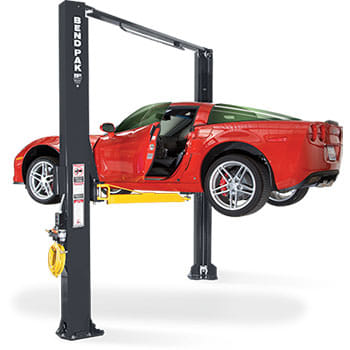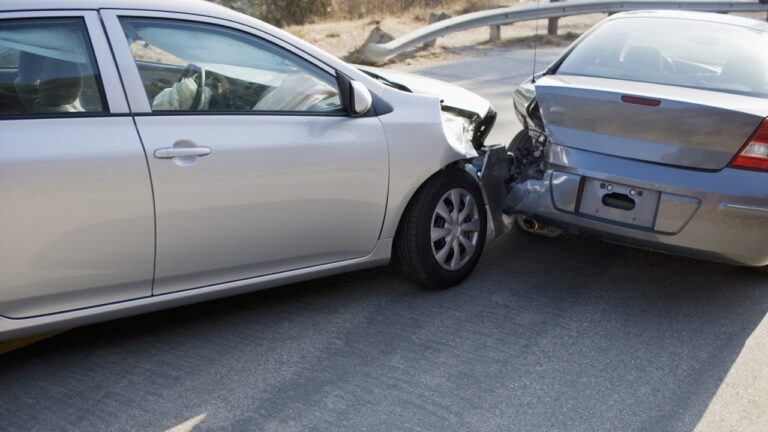What is Auto Insurance?
What is Auto Insurance? Auto insurance, also known as car insurance or motor insurance, is a contract between a vehicle owner and an insurance company that provides financial protection against physical damage, bodily injury resulting from traffic collisions, and liability that could arise from incidents in a vehicle. This article delves into the fundamentals of auto insurance, its types, coverage options, legal requirements, and its importance in modern society.
Understanding Auto Insurance
The Basics
Auto insurance is designed to cover costs associated with car accidents and other types of vehicle damage. The insured person pays a premium, which is typically a monthly or yearly fee, to the insurance company. In return, the insurance company agrees to pay for certain expenses related to accidents and damage to the vehicle, as outlined in the policy.
Components of Auto Insurance in What is Auto Insurance?
- Premium: The amount the policyholder pays for insurance coverage. It can vary based on factors like age, driving history, vehicle type, and location.\
- Deductible: The amount the policyholder must pay out of pocket before the insurance company pays a claim. Higher deductibles usually result in lower premiums.
- Coverage Limits: The maximum amount the insurance company will pay for a covered claim. These limits are typically defined in the policy.
Types of Auto Insurance Coverage
Auto insurance policies can be tailored with various types of coverage to meet different needs and legal requirements. Here are the main types of coverage:
Liability Coverage
Liability coverage is mandatory in most states and is divided into two parts:
- Bodily Injury Liability: Covers medical expenses, lost wages, and legal fees if you are responsible for an accident that injures another person.
- Property Damage Liability: Pays for repairs to another person’s property if you are at fault in an accident.
Collision Coverage
Collision coverage pays for damage to your vehicle resulting from a collision with another vehicle or object, such as a tree or a guardrail, regardless of who is at fault. It is typically required if you are financing or leasing your car.
Comprehensive Coverage
Comprehensive coverage protects against damage to your vehicle from non-collision incidents, such as theft, vandalism, natural disasters, and falling objects. Like collision coverage, it is often required for financed or leased vehicles.
Personal Injury Protection (PIP) or Medical Payments Coverage
PIP, also known as no-fault insurance, covers medical expenses, lost wages, and other costs for you and your passengers, regardless of who is at fault in the accident. Medical payments coverage is similar but usually offers more limited benefits.
Uninsured/Underinsured Motorist Coverage
This coverage protects you if you are involved in an accident with a driver who has no insurance or insufficient insurance to cover your damages. It can also cover hit-and-run incidents.
Gap Insurance
Gap insurance is particularly useful for new or leased vehicles. It covers the difference between the actual cash value of your car and the balance still owed on your loan or lease if your car is totaled or stolen.
Rental Reimbursement Coverage
This optional coverage pays for a rental car while your vehicle is being repaired due to a covered claim.
Roadside Assistance
Roadside assistance provides services like towing, battery jump-starts, tire changes, and lockout assistance if your vehicle breaks down.
Legal Requirements and Regulations in What is Auto Insurance?
Mandatory Coverage
In the United States, auto insurance requirements vary by state, but almost all states mandate some form of liability coverage. The minimum required limits also vary. For example, in California, drivers must carry at least $15,000 in bodily injury liability per person, $30,000 per accident, and $5,000 in property damage liability.
Proof of Insurance
Drivers are typically required to carry proof of insurance in their vehicle and present it upon request by law enforcement officers. Failure to provide proof of insurance can result in fines, license suspension, and vehicle impoundment.
Penalties for Non-Compliance
Penalties for driving without insurance can be severe and include fines, suspension of driving privileges, and even jail time in some cases. Additionally, uninsured drivers may be held personally liable for any damages or injuries they cause.
The Importance of Auto Insurance in What is Auto Insurance?
Financial Protection
Auto insurance provides crucial financial protection. Without insurance, you would be responsible for paying out of pocket for repairs, medical bills, and legal fees if you cause an accident. These costs can be financially devastating, especially in serious accidents involving significant property damage or injuries.
Legal Compliance
Auto insurance is not just a good idea; it is often a legal requirement. Complying with state insurance laws helps avoid legal penalties and ensures that you can legally operate your vehicle on public roads.
Peace of Mind
Knowing that you have auto insurance provides peace of mind. In the event of an accident, you have the reassurance that your insurance will help cover the costs, allowing you to focus on recovering and getting back on the road.
Protection Against Uninsured Drivers
Uninsured/underinsured motorist coverage protects you if you are involved in an accident with a driver who does not have adequate insurance. This coverage ensures that you are not left with hefty bills due to another driver’s lack of insurance.
Factors Influencing Auto Insurance Rates in What is Auto Insurance?
Several factors influence the cost of auto insurance premiums. Understanding these factors can help you make informed decisions about your coverage.
Driving Record
Your driving history is one of the most significant factors affecting your premium. Drivers with a clean record typically pay less, while those with accidents, traffic violations, or DUIs will face higher rates.
Age and Gender
Younger drivers, particularly teenagers, often have higher premiums due to their lack of driving experience and higher risk of accidents. Statistically, young males are considered higher risk than young females, leading to higher premiums for males in this age group.
Vehicle Type
The make, model, and year of your vehicle impact your insurance rates. Expensive cars, sports cars, and models with high repair costs generally have higher premiums. Safety features and ratings can also influence costs, with safer cars often receiving lower rates.
Location
Where you live affects your insurance rates. Urban areas with higher traffic densities and crime rates usually have higher premiums compared to rural areas. Additionally, states have different minimum coverage requirements, influencing overall costs.
Credit Score
In many states, insurance companies use credit scores to help determine premiums. Studies have shown a correlation between credit scores and the likelihood of filing claims. Generally, individuals with higher credit scores receive lower rates.
Coverage Choices
The amount and types of coverage you choose directly impact your premium. Higher coverage limits and additional options like comprehensive, collision, and roadside assistance increase the cost of your policy.
Deductibles
Choosing a higher deductible can lower your premium. However, this means you will pay more out of pocket if you need to file a claim.
Choosing the Right Auto Insurance in What is Auto Insurance?
Selecting the right auto insurance involves evaluating your needs, comparing policies, and understanding the terms and conditions. Here are steps to help you make an informed decision:
Assess Your Needs
Consider factors such as the value of your vehicle, your driving habits, and your financial situation. Determine the types of coverage that are most important to you, such as liability, comprehensive, and collision coverage.
Compare Quotes
Shop around and obtain quotes from multiple insurance providers. Comparing quotes can help you find the best rates and coverage options. Use online comparison tools to simplify the process.
Check Financial Stability
Research the financial stability of insurance companies. Companies with strong financial ratings are more likely to be able to pay out claims. Resources like AM Best and Standard & Poor’s provide financial strength ratings for insurance companies.
Read Reviews
Look at customer reviews and ratings to gauge the quality of service provided by different insurers. Consider factors like claims processing, customer service, and overall satisfaction.
Understand Policy Details
Carefully read the terms and conditions of the policies you are considering. Understand the coverage limits, deductibles, exclusions, and any additional options or riders. Ask questions if anything is unclear.
Consider Discounts
Inquire about available discounts that could lower your premium. Common discounts include safe driver discounts, multi-policy discounts, good student discounts, and discounts for safety features in your vehicle.
Filing an Auto Insurance Claim in What is Auto Insurance?
Knowing how to file a claim can make the process smoother if you ever need to use your insurance. Here are the general steps to follow:
. Report the Incident
Contact your insurance company as soon as possible after an accident or incident. Provide them with details such as the date, time, location, and description of what happened.
. Provide Documentation
Submit any necessary documentation, such as police reports, photos of the damage, and contact information for any involved parties or witnesses. Keep copies of all documents for your records.
. Work with the Adjuster
An insurance adjuster will likely be assigned to your claim. They will evaluate the damage and determine the amount the insurance company will pay. Cooperate with the adjuster and provide any additional information they request.
. Get Estimates
If your vehicle needs repairs, obtain estimates from approved repair shops. Some insurance companies have preferred shops that they work with, which can streamline the process.
. Receive Payment
Once the claim is approved, you will receive payment for the covered amount, minus your deductible. If your vehicle is financed or leased, the payment may go directly to the repair shop or the lienholder.
. Follow Up
Stay in touch with your insurance company throughout the process to ensure everything is progressing smoothly. Keep track of all communications and document any issues that arise.
Auto Insurance and Emerging Trends in What is Auto Insurance?
The auto insurance industry is evolving with advancements in technology and changes in consumer behavior. Here are some emerging trends that are shaping the future of auto insurance:
Usage-Based Insurance (UBI)
Usage-based insurance, also known as pay-as-you-drive or pay-how-you-drive, uses telematics devices to monitor driving behavior and mileage. This data is used to determine premiums, offering potentially lower rates for safe and low-mileage drivers.
Autonomous Vehicles
The rise of autonomous vehicles presents new challenges and opportunities for the auto insurance industry. Insurers will need to adapt to new risk assessments and coverage models as self-driving cars become more common.
Digital and Mobile Solutions
Insurance companies are increasingly offering digital and mobile solutions for policy management, claims processing, and customer service. Mobile apps and online portals provide convenience and streamline interactions between insurers and policyholders.
Climate Change and Natural Disasters
With the increasing frequency of extreme weather events, insurers are reevaluating risk assessments and pricing models. Climate change is leading to more claims for flood, hail, and storm damage, impacting overall industry costs.
Cybersecurity
As vehicles become more connected, the risk of cyberattacks increases. Insurers are developing new coverage options to protect against cyber risks, such as hacking and data breaches.
Personalized Insurance
Advances in data analytics allow insurers to offer more personalized insurance products. Tailored coverage options and pricing based on individual driving habits and preferences are becoming more common.
Conclusion on What is Auto Insurance?
Auto insurance is a critical component of vehicle ownership, providing financial protection, legal compliance, and peace of mind. Understanding the different types of coverage, legal requirements, and factors influencing premiums can help you make informed decisions about your policy. As the auto insurance industry continues to evolve with technological advancements and changing consumer needs, staying informed about emerging trends will ensure you are adequately protected on the road.





